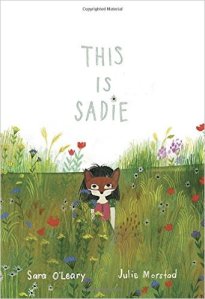Sounds like flat-out plagiarism, right? And it would be, if you were trying to pass the words off as your own. But that’s not what I’m talking about.
Somewhere along the journey of thinking and reading and writing about children’s books, I discovered this practice that I find oddly instructive: I copy other people’s books. I don’t do it all the time — it’s an activity I save for picture books that grab me for one reason or another, or that raise some particular question or quandary. But I do do it regularly, and I highly recommend it. (With today’s diminishing word counts in picture books, it’s never a massive undertaking.)
Once I decide I’m going to copy a book, this is what I do.
First, I get to know the book better: I read it a few more times, a little more slowly and attentively than before. Then, I sit down in front of my computer or my notebook (either is good), go page by page, and re-type or re-write the whole text.
I number the spreads as I go, and break the lines up where the author/illustrator/book-designer breaks them. I use symbols to show where text chunks are separated on the page, and where they are split across the two pages. If the author uses bubble text or plays with the text graphically, I communicate that too. And: I write my own illustration notes.
Pretty simple.
Studying ‘mentor texts’ or ‘precedent books’ or just plain old ‘books you love’ is a great learning tool. Adding in ‘copying’ or ‘rewriting’ can take that pursuit to a whole new level, revealing all sorts of subtleties you otherwise might not see. There’s something about the process of having to write everything down and spell it out for myself that makes me look closer and see more. Sometimes when I’m finished I look back at what I’ve typed up, but often I don’t. Its one of those process things, where just doing it is usually more valuable than the product.
I suppose the next step would be to dummy the books too — although making a dummy of a book that you already have in your hands somehow seems even weirder than rewriting that book. Re-dummying could prove to be just as revealing — or maybe not. It might just make you feel like a human copy-machine, since it doesn’t entail the same kind of dissection.
But still: it might be worth a try.


